The Best Hiking Trails in the USA
The Best Hiking Trails in the USA
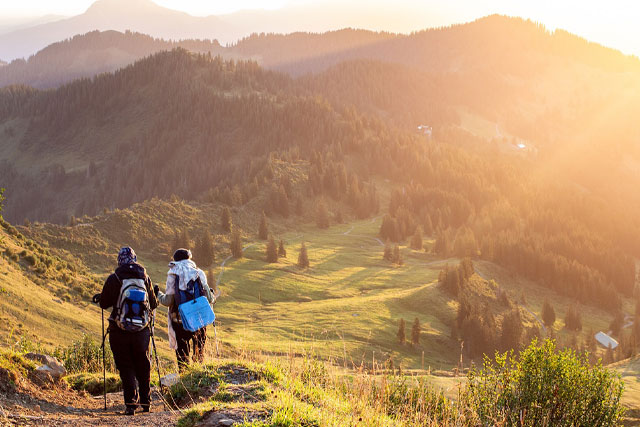
The United States is a hiker’s paradise, a land where trails wind through towering mountains, ancient forests, and rugged coastlines, each path telling a story of nature’s grandeur and human resilience. Whether you’re chasing the thrill of a summit sunrise or seeking the solitude of a hidden gem, these trails offer something for every adventurer. Imagine lacing up your boots, feeling the crunch of leaves beneath your feet, and breathing in air so fresh it feels like a gift from the earth. From the iconic peaks of Zion to the remote shores of California’s Lost Coast, these best hiking trails in the USA will lead you through national parks and secret corners, inviting you to discover the beauty of the wild and the joy of the journey. Pack your backpack, grab a map, and let’s explore trails that will leave you with memories to last a lifetime.
Table of Contents
Appalachian Trail (East Coast)
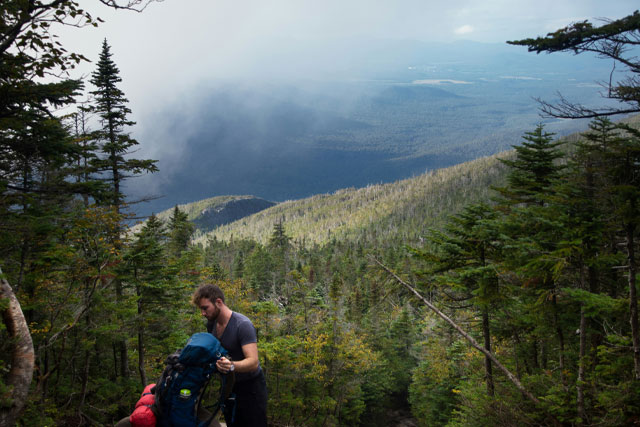
Stretching over 2,190 miles from Georgia to Maine, the Appalachian Trail (AT) is one of the most iconic long-distance hiking trails in the world, weaving through 14 states along the East Coast. This trail is a pilgrimage for thru-hikers, offering a mix of dense forests, rolling mountains, and quaint towns that feel like stepping back in time. A popular section for day hikers is the Shenandoah National Park in Virginia, where you can trek through blooming wildflowers in spring and enjoy panoramic views of the Blue Ridge Mountains. The trail’s difficulty varies, so beginners can opt for shorter segments like the 7-mile McAfee Knob in Virginia, known for its jaw-dropping 270-degree views. Pack sturdy boots, a lightweight tent if you’re camping, and be prepared for changing weather—spring and fall are the best times to avoid summer crowds and winter snow. The AT isn’t just a hike; it’s a journey through America’s history, where every step connects you to the generations of hikers who’ve walked this path before you.
John Muir Trail (California)
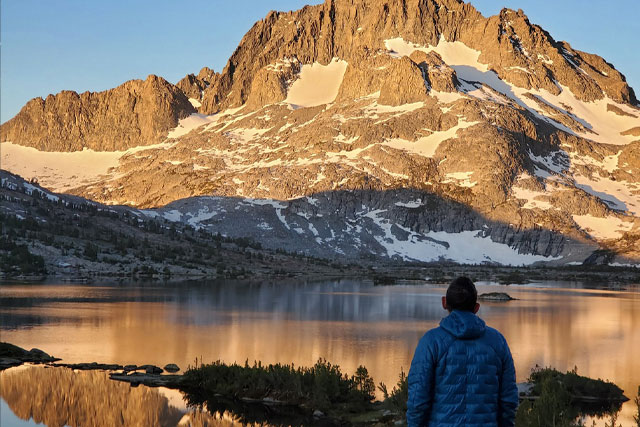
The John Muir Trail (JMT) is a 211-mile masterpiece that runs through California’s Sierra Nevada, from Yosemite National Park to the summit of Mount Whitney, the highest peak in the contiguous U.S. at 14,505 feet. Named after the legendary naturalist, this trail takes you through some of the most stunning landscapes in the country—think alpine meadows, crystal-clear lakes, and granite peaks that glow golden at sunrise. A highlight is the stretch through Kings Canyon National Park, where you’ll pass by the shimmering Rae Lakes and feel the mist of nearby waterfalls. The JMT typically takes 2-3 weeks to complete, so plan for a backcountry permit and pack lightweight gear, including a bear canister for food storage (bears are common in the area). Summer is the best time to hike, with July and August offering snow-free trails and mild weather. As you stand on Whitney’s summit, watching the world stretch out below, you’ll understand why John Muir called these mountains “the grandest of all special temples of Nature.”
Angels Landing (Utah)
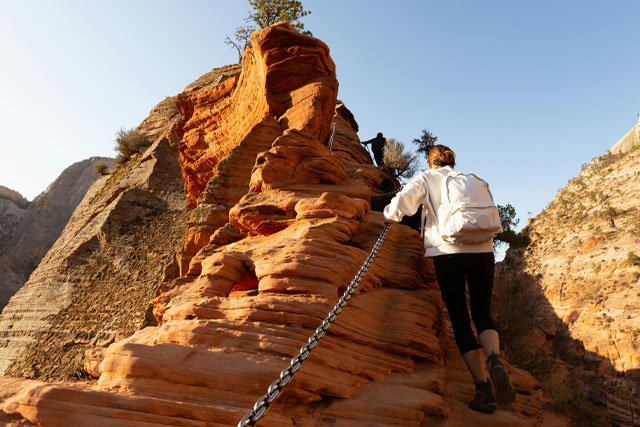
Angels Landing in Zion National Park, Utah, is a bucket-list hike for thrill-seekers, offering heart-pounding views and a climb that tests your courage. This 5.4-mile round-trip trail gains 1,488 feet of elevation, leading to a narrow ridge with sheer drop-offs on both sides—chains bolted into the rock help you navigate the final half-mile to the summit. From the top, you’ll be rewarded with a 360-degree view of Zion Canyon, where red rock cliffs glow under the desert sun and the Virgin River winds like a silver thread below. The trail starts at the Grotto trailhead and takes about 3-5 hours, with the most challenging section being the steep switchbacks of Walter’s Wiggles. Wear grippy hiking shoes, bring plenty of water (there’s no shade), and start early to beat the crowds—spring and fall offer cooler temperatures. If heights aren’t your thing, stop at Scout Lookout for a stunning view without the final ascent. Angels Landing is a hike that will leave your heart racing and your spirit soaring.
Grand Canyon Rim-to-Rim (Arizona)
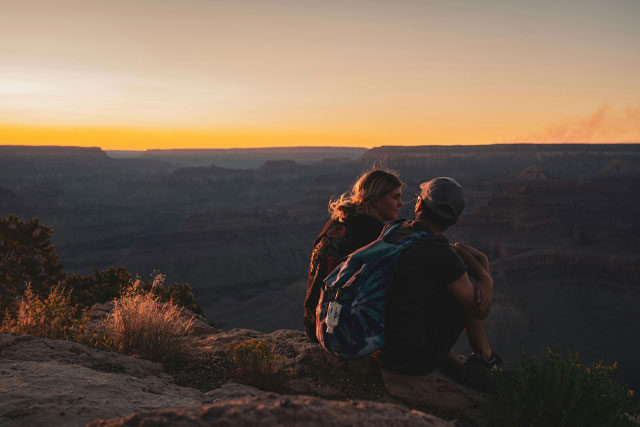
The Grand Canyon Rim-to-Rim hike is a bucket-list adventure that takes you from one side of this natural wonder to the other, covering 24 miles from the North Rim to the South Rim (or vice versa). Starting at the North Kaibab Trail, you’ll descend 14 miles and 6,000 feet to the canyon floor, passing through layers of geological history—red sandstone, limestone, and ancient shale—before crossing the Colorado River and climbing up the Bright Angel Trail to the South Rim. The journey takes most hikers 12-15 hours (often split over two days), with Phantom Ranch offering a rustic campground or cabins for an overnight stay (book well in advance). Summer temperatures can soar above 100°F at the canyon floor, so spring (April-May) or fall (September-October) are ideal. Pack at least 3 liters of water, salty snacks, and trekking poles for the steep ascent. Standing on the South Rim, gazing back at the vast chasm you just crossed, you’ll feel a sense of accomplishment that matches the grandeur of the Grand Canyon itself.
The Wonderland Trail (Washington)
Encircling the majestic Mount Rainier in Washington’s Mount Rainier National Park, the Wonderland Trail is a 93-mile loop that takes you through some of the Pacific Northwest’s most stunning scenery. This trail is a feast for the senses—wildflower meadows in full bloom, glacier-fed rivers roaring through valleys, and the constant presence of Rainier’s snow-capped peak, standing at 14,410 feet. The trail typically takes 10-14 days to complete, with 22 backcountry campsites along the way (permits required). A popular day hike section is the 5-mile Summerland to Panhandle Gap, where you’ll see alpine tarns and possibly spot mountain goats grazing on the slopes. Pack rain gear (the area is known for sudden showers), a sturdy tent, and enough food for the journey—resupply points are limited. Late July to early September is the best time, as snow can linger into early summer. The Wonderland Trail is a love letter to the wilderness, a journey that reminds you of nature’s power and beauty with every step.
Kalalau Trail (Hawaii)
The Kalalau Trail on Kauai’s Na Pali Coast is an 11-mile one-way trek that feels like stepping into a tropical paradise, with jagged cliffs plunging into the turquoise Pacific Ocean and waterfalls cascading through lush valleys. Starting at Ke’e Beach, the trail winds through dense rainforests, past the dramatic Hanakapi’ai Falls (a 2-mile detour), and ends at the remote Kalalau Beach, where you can camp under the stars with the sound of waves as your lullaby. The trail is challenging, with steep, muddy sections and narrow ledges—especially the infamous Crawler’s Ledge at mile 7—so trekking poles and sturdy shoes are a must. Permits are required for overnight camping, and the hike takes 6-8 hours each way, though many do it as a 2-day trip. May to September offers the driest conditions, but be prepared for rain any time of year. As you dip your toes in the ocean at Kalalau Beach, watching the sunset paint the cliffs in gold, you’ll feel like you’ve found a slice of heaven on Earth.
Ice Age Trail (Wisconsin)
The Ice Age Trail in Wisconsin is a 1,200-mile journey through the state’s rolling hills, forests, and prairies, tracing the path of the last Ice Age glaciers that shaped the landscape 12,000 years ago. While thru-hiking the entire trail takes weeks, a popular section for day hikers is the 7-mile Devil’s Lake Segment in Devil’s Lake State Park, where you’ll climb over ancient quartzite bluffs and enjoy views of the lake framed by autumn foliage in the fall. The trail passes through kettle lakes, moraines, and drumlins—geological features left by retreating glaciers—making it a favorite for nature enthusiasts and history buffs alike. Spring and fall are ideal for hiking, with mild weather and fewer bugs (summer can be humid and mosquito-heavy). Wear comfortable hiking shoes, bring a map (some sections are remote), and pack a picnic to enjoy at one of the scenic overlooks. The Ice Age Trail is a quiet escape, a place to walk in the footsteps of history and feel the stillness of Wisconsin’s wild heart.
Lost Coast Trail (California)
The Lost Coast Trail in Northern California is a 25-mile hidden gem along the rugged King Range, where the coastline is so wild that Highway 1 veers inland, leaving this stretch untouched by development. Starting at Mattole Beach, the trail follows the shore past black sand beaches, tide pools teeming with starfish, and towering cliffs where waves crash with a thunderous roar. The hike takes 2-3 days, with campsites like Cooskie Creek offering a place to rest under the stars. Be prepared for tide-dependent sections—check tide charts to avoid being trapped by high water—and watch for wildlife like seals, sea lions, and even bears in the backcountry. Spring and fall offer the best weather, with less fog than summer and milder temperatures than winter. Pack lightweight gear, waterproof boots (you’ll cross creeks), and a camera to capture the dramatic scenery. The Lost Coast Trail is a journey to one of California’s last wild frontiers, a place where the ocean’s rhythm and the solitude of the trail make you feel truly free.
Tips for Hiking in the USA
Hiking in the USA is an adventure that rewards preparation and respect for nature. Always check weather conditions and trail reports before you go—some trails, like the Kalalau, can be dangerous in rain, while others, like the Grand Canyon Rim-to-Rim, require careful heat management. Invest in quality gear: a good pair of hiking boots, a hydration pack, and a lightweight tent for overnight trips can make all the difference. National parks often require permits, so plan, especially for popular trails like the John Muir Trail. Finally, embrace the Leave No Trace principles—pack out what you bring in, stick to marked trails, and leave the wilderness as beautiful as you found it. These best hiking trails in the USA are more than just paths; they’re invitations to connect with nature, challenge yourself, and create stories that will inspire others to follow in your footsteps.


